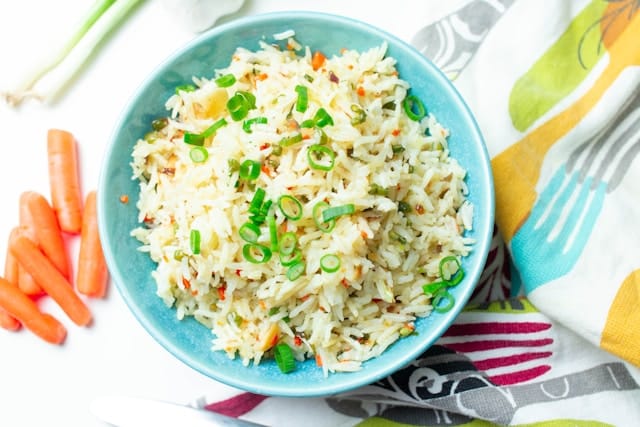Can You Master the Art of Authentic Indian Biryani with a Saffron Infused Rice?

Biryani, a fragrant and flavorful dish, is a cornerstone of Indian cuisine. Featuring layers of tender meat, aromatic rice, and a assortment of rich spices, this delicacy is a feast for the senses. Whether cooked with chicken, lamb, or even vegetables, the resulting dish is always a symphony of flavors. The key ingredients include basmati rice, yogurt, onions, and a medley of spices. This article will guide you on a culinary adventure, unraveling the secrets behind the art of cooking an authentic Biryani with a saffron-infused rice.
The History and Variety of Biryani
Before we dive into the intricacies of cooking this beloved dish, let’s explore the history of Biryani and understand its regional variations. The term "Biryani" comes from the Persian word "Birian," which means ‘fried before cooking.’ This dish has a rich history dating back to the Mughal era, and over time, several regional variations have emerged, each with a unique taste and cooking style.
A lire également : What’s the Secret to a Perfectly Crisp French Tarte Tatin with Caramelized Apples?
Among the most popular types, you’ll find the Hyderabad Biryani, known for its strong spices, and the Kolkata Biryani, recognized by its distinct addition of boiled potatoes. No matter the regional variation, the Biryani’s essence remains consistent: a layered dish of meat and rice cooked together, releasing an irresistible aroma that’s hard to resist.
Essential Ingredients in an Authentic Biryani
To create an authentic Biryani, you need to gather some specific ingredients. The basmati rice is the star of the dish, known for its long, slender grains and fragrant aroma. The meat used can be chicken, lamb, or even fish. Layered with the rice, the protein enriches the dish with its juices, infusing the grains with an array of flavors.
Lire également : How to Achieve a Creamy and Flavorful Gourmet Mushroom Stroganoff with Fresh Pasta?
The medley of spices is what sets a Biryani apart. Traditional spices include cloves, cinnamon, cardamom, and star anise. These, along with ginger, garlic, and onions, create a robust flavor profile. The addition of yogurt helps to balance the strong spices, providing a creaminess to the dish. Finally, the saffron-infused rice gives Biryani its signature color and an additional layer of flavor.
The Cooking Process of Biryani
Biryani is a labor of love and requires patience but the result is worthwhile. The process begins with marinating the meat. The chicken or lamb is usually marinated in a mixture of spices, yogurt, and sometimes even a squeeze of lemon juice. This mixture is left to rest, allowing the flavors to permeate the meat.
While the meat marinates, the basmati rice is soaked and later boiled until it is half-cooked. The grain’s length doubles, and its aroma intensifies. This half-cooked rice is layered with the marinated meat in a heavy-bottomed pot. Freshly ground spices, fried onions, and ghee (clarified butter) are then strewn over the layers.
The pot is then sealed airtight to trap the flavors inside, a technique known as ‘Dum’ cooking. The Biryani is then cooked on a low heat. The rice and meat fuse together, and the flavors meld, resulting in a truly delicious dish.
Biryani: A Dish of Celebration
Biryani is more than just a dish; it’s a celebration. This decadent food item is often associated with festivities, family gatherings, and special occasions in the Indian subcontinent. The rich flavors, the captivating aroma, the vibrant colors – all contribute to making Biryani the piece de resistance of any dining table. But one need not wait for a special occasion to enjoy this dish. Any day can be made extraordinary with a plate of Biryani.
Mastering the Art of Biryani
Creating an authentic Biryani is an art that requires practice, precision, and a passion for cooking. From selecting the right kind of basmati rice to choosing fresh spices, each step matters. The marination process is crucial in determining the depth of flavors in the final dish. Similarly, the cooking technique, especially the Dum process, is vital in creating the perfect Biryani.
Remember, each ingredient has a role to play in the overall dish. The saffron-infused rice is not just about color; it contributes a distinct flavor that is key to a Biryani. The yogurt is not just for marination; it also offsets the heat of the spices.
By understanding these nuances, you can indeed master the art of cooking an authentic Indian Biryani. It may be a time-consuming process, but the end result is a dish that tickles the taste buds and satisfies the soul.
The Art of Layering in the Biryani Recipe
The intricacy of layering is an art in itself in the Biryani recipe. This is a key process that distinguishes Biryani from an ordinary rice dish. The layers composed of marinated meat, partially cooked basmati rice and aromatic spices make Biryani a culinary masterpiece.
The first layer consists of the marinated meat which could be chicken for a chicken biryani or lamb for a lamb biryani. The marination process gives the meat its rich flavor. Yogurt, ginger garlic paste, and chili powder form the backbone of the marinade. If you are preparing mutton biryani, the meat needs to be marinated for a longer time to make sure the flavors penetrate deep into the meat.
Next comes the layer of basmati rice. This rice is known for its long grains and fragrant aroma. After the rice is soaked and half-cooked, it is layered on top of the marinated meat.
The final layer consists of the fried onions, mint leaves, and additional spices. Fried onions add a sweet flavor and crispy texture that enriches the biryani’s taste. Mint leaves lend a fresh and cool taste to balance the heat from the spices.
Once the layers are assembled, it’s time to seal the pot. This is when the ‘Dum’ cooking technique is used. The pot is sealed with dough or a tight lid and cooked on low heat. This allows the flavors from the marinated meat to seep into the partially cooked rice, resulting in a perfectly cooked Biryani.
Conclusion: The Joy of Authentic Indian Cooking
The joy of making and relishing an authentic Indian Biryani is unparalleled. There is something deeply satisfying about mastering the art of Biryani, especially when the perfectly cooked rice and tender meat come together in a harmony of flavors that is Biryani. It embodies the richness and diversity of Indian cuisine.
Every element, from the choice of basmati rice to the precision in layering to the slow cooking process, contributes to creating this Indian culinary delight. The fragrance of the garam masala, the fiery heat of the chili powder, the creamy tang of the yogurt, the sweet crispiness of the fried onions all dance together in a pot to create the magic that we call Biryani.
So the next time you cook Biryani, remember the history and the tradition that this dish carries. Remember the art of layering, the crucial role of marination, and the slow cooking technique that brings the Biryani to life. Keep in mind that creating an authentic Biryani is not just about following a recipe; it’s about embracing the journey of Indian cooking.
The art of Biryani is a testament to the rich culinary heritage of India. It is an embodiment of our love for food, our patience, our attention to detail, and our respect for tradition. So, go ahead, immerse yourself in the world of flavors and prepare your own Biryani. Remember, it’s not just a rice dish; it’s a celebration.
